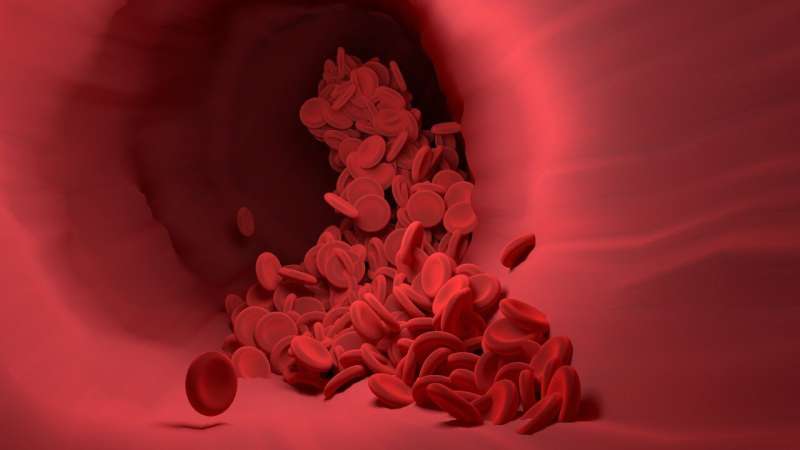Discovery about how the body regulates blood pressure could lead to new treatments for hypertension

University of Virginia School of Medicine researchers have identified a key contributor to high blood pressure that could lead to new treatments for a condition that affects almost half of American adults.
The discovery from UVA’s Swapnil Sonkusare and colleagues breaks new ground in our understanding of how the body regulates blood pressure. It also shows how problems with this critical biological process drive high blood pressure, also known as hypertension.
UVA’s research, published as in Circulation with an accompanying editorial, identifies a “new paradigm in hypertension,” according to an accompanying editorial. The editorial says UVA’s “innovative” discoveries fill “major gaps” in our understanding of the fundamental molecular causes of high blood pressure.
“Our work identifies a new mechanism that helps maintain healthy blood pressure and shows how abnormalities in this mechanism can lead to hypertension,” said Sonkusare, of UVA’s Department of Molecular Physiology and Biological Physics and UVA’s Robert M. Berne Cardiovascular Research Center. “The discovery of a new mechanism for elevation of blood pressure could provide therapeutic targets for treating hypertension.”
Understanding high blood pressure
High blood pressure is estimated to affect more than 116 million American adults. In 2020, high blood pressure contributed to or caused more than 670,000 deaths in the United States, the federal Centers for Disease Control and Prevention reports. Left unchecked, the condition can damage the heart and increase the risk for stroke and other health problems.
Blood pressure is controlled, in part, by calcium levels in smooth muscle cells that line blood vessel walls. Smooth muscle cells transport calcium in and use it to regulate the contraction of blood vessels as needed.
High blood pressure is commonly treated with “calcium blockers” that reduce the movement of calcium, but these medications have many side effects because they block a mechanism that is used by multiple organs in the body for carrying out normal functions. So a treatment option that targets the harmful effects of calcium, but not its beneficial effects, could be very helpful for patients with high blood pressure.
Sonkusare and his team discovered two critical—and previously unknown—signaling centers in smooth muscle cells that bring in calcium and regulate blood pressure. These “nanodomains,” the researchers found, act like symphony conductors for blood vessels, directing them to contract or relax as needed. These signaling centers, the researchers determined, are a key regulator of healthy blood pressure.
Further, the UVA scientists found that disruptions in this process contribute to high blood pressure. In both mouse models of the disease and hypertensive patients, the fine balance between constrictor and dilator signaling centers is lost. This caused the blood vessels to become too constricted, driving up blood pressure.
The new findings help us better understand how our bodies maintain proper blood pressure and provide enticing targets for scientists seeking to develop treatments targeting underlying causes of high blood pressure. Developing treatments that do not affect the beneficial effects of calcium will require additional research and a deeper understanding of the calcium-use process, but Sonkusare’s team is already working toward that goal.
“We’ve shown that smooth muscle cells use ‘spatial separation’ of signaling centers to achieve constriction or dilation of arteries. We are now investigating the individual components of these signaling centers,” Sonkusare said. “Understanding these components will help us target them to lower or raise the blood pressure in disease conditions that show high or low blood pressure, respectively.”
Source: Read Full Article
